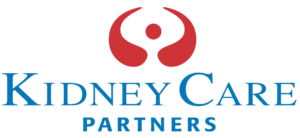NEW DATA ANALYSIS: Improvements in Kidney Care Mean Americans with Kidney Failure Are Living Longer While Saving Nation’s Health Care System Billions
March 11, 2019
Better dialysis care has saved billions of Medicare dollars and helped patients with kidney failure who depend on dialysis live longer, healthier lives with reduced hospital admissions
WASHINGTON – More than 30 million Americans are living with kidney diseases. It is a silent killer that, left untreated, can develop into kidney failure – requiring dialysis or a kidney transplant to live. This condition takes an enormous clinical toll on patients and is one of the costliest in Medicare.
Despite being among the most medically complex and expensive Medicare beneficiaries to treat, Americans with kidney failure are surviving longer than ever before while costing the Medicare program significantly less, primarily as a result of reduced hospitalizations due to tremendous progress by the kidney care community to improve care quality. The role of care providers in reducing the cost of care outside the dialysis facility setting is particularly important because Medicare provides coverage for nearly all Americans who rely upon dialysis treatments in order to live, though Medicare pays less than the cost of care, according to the most recent Medicare Payment Advisory Commission (MedPAC) report.
“According to our review of most recent report of the United States Renal Data System (USRDS), survival rates for both men and women have improved for patients receiving all types of dialysis care,” said Guy D’Andrea, Managing Partner of Discern Health. “This has been achieved despite higher numbers of individuals who require dialysis care nationwide, though Medicare’s spending growth on End Stage Renal Disease (ESRD) patients slowed from 7 percent to 1.5 percent across a 10-year period.”
“During March, National Kidney Month, it is encouraging to reflect on the progress we’ve made for individuals with kidney disease and kidney failure, despite the difficult challenges of inadequate Medicare reimbursement rates falling below the cost of care and scarce resources for research and innovations,” said Dr. Allen Nissenson, chairman of Kidney Care Partners (KCP). “During the past 15 years, better dialysis care and innovative federal programs have changed the landscape entirely – patients are living longer and fuller lives with more care choices and ESRD’s strain on the healthcare system has significantly decreased.”
Kidney Care Partners, the nation’s largest kidney coalition comprised of physician groups, providers, patient advocacy groups, manufacturers, and researchers, has been a key partner in the development of programs to improve the lives of patients and the create a vision for the future of kidney care.
Thanks to improvements in care spurred by the work of dialysis facilities and their medical teams through collaborative programs enacted a decade ago under the industry Performance Excellence and Accountability in Kidney Care (PEAK) program, mortality rates for new patients with ESRD have consistently dropped, including an estimated 30 percent drop in all-cause dialysis mortality between 2001 and 2016. In just under 20 years, mortality dropped by more than 31 percent for all Medicare patients aged 65 years or older who receive dialysis (including new patients) – a significant improvement for the fastest growing population of dialysis patients.
“Improving the quality of care for patients on dialysis has helped providers reduce complications, which in turn reduces hospital admissions,” added Dr. Nissenson. “That type of straightforward progress has meant longer lives for patients and billions in savings for Medicare. It’s something our KCP community is extremely proud to celebrate with policymakers who have been true partners in our collective efforts to improve care and efficiencies.”
The Medicare ESRD program remains underfunded, as MedPAC recognized in its most recent margin analysis. This analysis showed that facility margins are negative 1.1 percent. Remarkably, the Medicare program overall has recognized a substantial reduction in the total costs of care for dialysis patients. Per capita Medicare dialysis spending rose to an inflation-adjusted $100,324 in 2008 but dropped to $93,223 in 2016 after the community’s PEAK campaign, and has continued to fall.
“While this information is positive and encouraging, there is still much more work to be done,” concluded Dr. Nissenson. “This is a public-private partnership which will continue to show positive improvements as we work toward our common goals of improved clinical outcomes and quality of life for patients, incentivizing research and innovation, and improving and expanding education about the epidemic of kidney disease in the US and the available treatment options when kidney failure occurs including active medical management, home dialysis and transplantation.
###
